Global Genes Rare Leader: FOXG1 Research Foundation Co-Founder & Executive Director
Global Genes features FOXG1 Research Foundation Co-founder and Executive Director, Nicole Johnson as a rare Leader. Learn about the FOXG1 organization’s strategy, mission, guiding principles, Nicole’s management philosophy, and more.
Global Genes Podcast: Empowering Rare Disease patients With Their Own Health Recods
Global Gene’s RareCast Podcast interviews our CEO and Co-founder about our innovative Ciitizen Natural History Study and how health records empower parents and caregivers to make sure researchers really understand our children’s condition.
Eine Zusammenfassung des FOXG1 Wissenschafts-Symposiums 2020
The German translation of the recap of the FOXG1 Science Symposium 2020. Eine Zusammenfassung des FOXG1 Wissenschafts-Symposiums 2020
Een samenvatting van het FOXG1 Science Symposium 2020
The Dutch translation fo the recap of the FOXG1 Science Symposium 2020.
Uma recapitulação do “FOXG1 Science Symposium 2020”
PORTUGUESE translation - VERSÃO EM PORTUGUÊS of the FOXG1 Science Symposium 2020.
El Simposio de ciencia FOXG1 2020
Spanish translation of the recap of the FOXG1 Research Science Symposium 2020.
Un récapitulatif du Symposium scientifique FOXG1 2020
French translation of the recap of the FOXG1 Science Symposium 2020. Un récapitulatif du Symposium scientifique FOXG1 2020
The Rare Disease Crusaders
I joined Ciitizen and initiated our entry into neurological diseases because I am both passionate and desperate to find an answer for my daughter. At Ciitizen, we’re creating a platform where medical records are collected on behalf of each patient, then automatically digitized into the computational data we need. From there, sophisticated machine learning technology is used to extract clinical data in order to create regulatory-grade Natural History Studies that do not require exorbitant amounts of time, energy, or money. Patient reported outcomes can then be added by us parents.
More importantly, this database of computational data we’re creating will be accessible and open to all patients, parents, caregivers, clinicians, academics, and biopharma researchers. Our goal is to eliminate the slow, manual, and expensive processes that we currently use to collect information and use the best technologies to be quick, cost-effective and more accurate when it comes to developing research.
The View Along the Path to a Cure for FOXG1 Syndrome | An Overview by Nasha Fitter
When Amara was diagnosed three years ago, I didn’t even know what a gene was. My background was in technology and business and I wasn’t prepared for the world of science. Luckily, my career had prepared me to tackle an impossible problem that no one has solved before. Being strategic and understanding the various pieces that need to be put together to achieve your end goal is critical in rare disease leadership. I have made mistakes over the past three years, and I have had successes. My goal in this blog series is to share those, and to continue sharing our experiences and journey of the FOXG1 Research Foundation as we work to find a cure for our children and everyone with FOXG1 syndrome.


